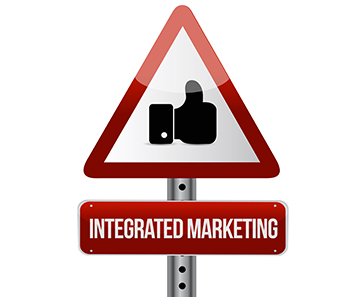What is Integrated Marketing — and Why Should You Care?
Marketing professionals often have a tough time talking about what they do in a way that is meaningful to anyone — well, besides other marketing professionals, that is. Take the term “integrated marketing,” for example.
Take the term “integrated marketing,” for example.
Like “brand identity” or “viral content,” integrated marketing is open to interpretation – both by the person who’s spouting it and by the person to whom it’s being spouted. In this case, Estipona Group is the one spouting, so we’ll share what we mean when we say we are a ”brand development agency providing our clients with integrated marketing services.” You know, without all the gobbledygook.
It Starts with Brand
Let’s start with the concept of “brand,” as that’s where we believe our clients should start. While a brand name is what a company is called, a company’s brand sums up how it is thought of or perceived by its customers. That’s right, you don’t create your brand; your brand is determined by a bunch of people over whom you have absolutely no control. Or do you? (*cue maniacal laughter and finger triangle of evil contemplation*)
In point of fact, this is the goal of marketing communication efforts – to affect brand perception in such a way that it motivates an action in the consumer, such as buying a product or visiting a website. Brand marketing is simply all of your unified efforts to influence that potential consumer. And we have many ways to try to influence them. Oh yes. Yes we do. (*cue more maniacal laughter*)
SOMEWHAT RELATED YET TOTALLY INTERESTING: The OG Digital Marketing Powerhouse Is Making a Comeback
While your brand exists merely in your customer’s imagination, your advertising and communication efforts are real, tangible ways for you to influence that brand perception and develop a relationship with your consumers. So yes, a TV commercial and a social media campaign are two different marketing tools, but it’s important to get the same strategic message in front of your target audience using a variety of tools and mediums. That, my friend, is integrated marketing. Minus the gobbledygook.
What Integrated Marketing Looks Like
Let’s take a super-simplified example — like, say you are a music teacher trying to attract more music students. And say the core idea you are trying to convey (also called your “brand promise” in marketing speak/gobbledygook) is that you make learning music fun-fun-FUN! for your students. An integrated marketing program for you might look like this:
- Live the promise — make everything about your music studio fun, shining a happy spotlight on your awesome personality and your studio setting, which is bathed in bright colors and inside of which silly prizes are doled out for lesson achievements.
- Advertise to the target – create a quirky, colorful flyer to hang at local schools showing one of your happy students with a quote from them about how fun-fun-FUN! it is to take your lessons.
- Speak to the decision maker – create banner ads targeted at parents with a parent’s quote about how much their kid enjoys music lessons.
- Create a publicity event – develop a concert event benefiting a charity open to the public. Feature your music students performing, and have them dress up as their favorite famous musician. Silly prizes would be optional but recommended.
ALSO SOMEWHAT RELATED AND TOTALLY INTERESTING: Clickbait-and-Switch: The Power and Perils of PR Ploys
While this is a seriously stripped-down example, this integrated marketing plan demonstrates how the target audience of potential music students could consume a consistent marketing message – how learning music with this teacher is fun (fun-FUN!) – in multiple ways and in multiple mediums to multiple target audiences.
Consistency is Key to Brand Development
Recognize this? Apple is famous for their strong, consistent branding. When you see this mark, you know exactly what to expect.[/caption] The foundation of your brand development strategy should be consistency of message, tone, look and feel. You need to create a consistent message and consumer experience across multiple mediums and from multiple consumer approaches. But how? We thought you’d never ask:
- Think like your potential customers, and consider their first point of contact with you. If it’s a website, does that website reflect who you are and what your business is all about? If they call your business number, does the person answering or the greeting they receive reflect your company brand? When you send a follow up email – whether to answer a question or provide quote — does that email support and reinforce your brand?
- Are your online advertising efforts in alignment with your brand strategy? Do your banner ads look and sound the same as your website and other materials? You want the consumer to recognize you and your brand every time they come in contact with your communications.
- Don’t underestimate the importance of social media management. Every post should reflect what you are about and support your brand promise.
Marketing provides countless opportunities to affect your customers and potential customers — a lot of ways to touch them (in a totally non-creepy way, we should add). Make sure you are maximizing each of these opportunities. Make sure that every time you communicate, you are doing so in a consistent, branded, strategic way. Minus the gobbledygook. Unless that’s part of your brand promise. In which case, pile it on.
Mikalee Byerman is VP of Strategy for the Estipona Group and has been diagnosed as allergic to marketing gobbledygook. Seriously. Email her with questions or if you'd like help developing a kick-ass integrated marketing campaign for your own company.




